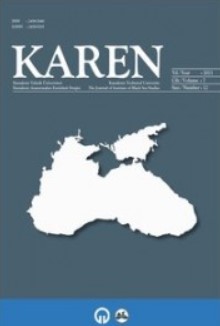OSMANLI-RUS SAVAŞI’NDA ROMANYA VE KUZEY DOBRUCA SORUNU (1877-1878)
ROMANIA AND NORTHERN DOBRUJA PROBLEM IN THE OTTOMAN-RUSSIAN WAR (1877–1878)
Author(s): İbrahim Kamil, Emine AlpaySubject(s): Diplomatic history, Military history, Political history, 19th Century, The Ottoman Empire, Inter-Ethnic Relations, Peace and Conflict Studies
Published by: Karadeniz Teknik Üniversitesi - Karadeniz Araştırmaları Enstitüsü
Keywords: Ottoman-Russian War; Treaty of Berlin; Romania; Northern Dobruja;
Summary/Abstract: Dobruja; located on the border of Romania and Bulgaria, is associated with concepts such as “an extraordinary mosaic of races”, “an ethnic Babylon”, “an orient in miniature”, “a magnificent laboratory of comparative ethnography” by many authors due to its ethnic diversity. It is divided into two parts with the definition of Northern and Southern Dobruja. After the Ottoman Empire was defeated in the Ottoman-Russian War of 1877-1878, the Russian Empire gave the Northern Dobruja lands to Romania for its aid in the war and asked for Bessarabia in return. The Romanian administration resisted not to give Bessarabia to the Russians, entered into long-lasting political discussions, but had to leave the region and settle with Northern Dobruja with the Berlin Treaty signed after the war. Romania made new regulations by taking the ethnic and religious diversity of Northern Dobruja into account. It enacted laws that were deemed necessary for the integration of the region with a large Tatar, Romanian, Turkish and Bulgarian population. Romania has provided facilities for increasing the welfare level of the residents of Dobruja, granting citizenship and property rights, and fulfilling their beliefs and worship freely.
Journal: Karadeniz Araştırmaları Enstitüsü Dergisi
- Issue Year: 7/2021
- Issue No: 12
- Page Range: 75-93
- Page Count: 19
- Language: Turkish

